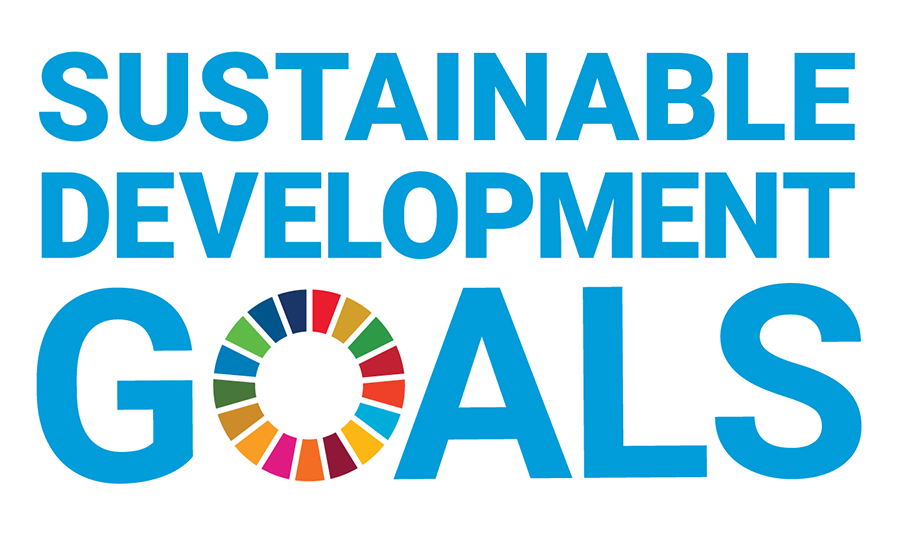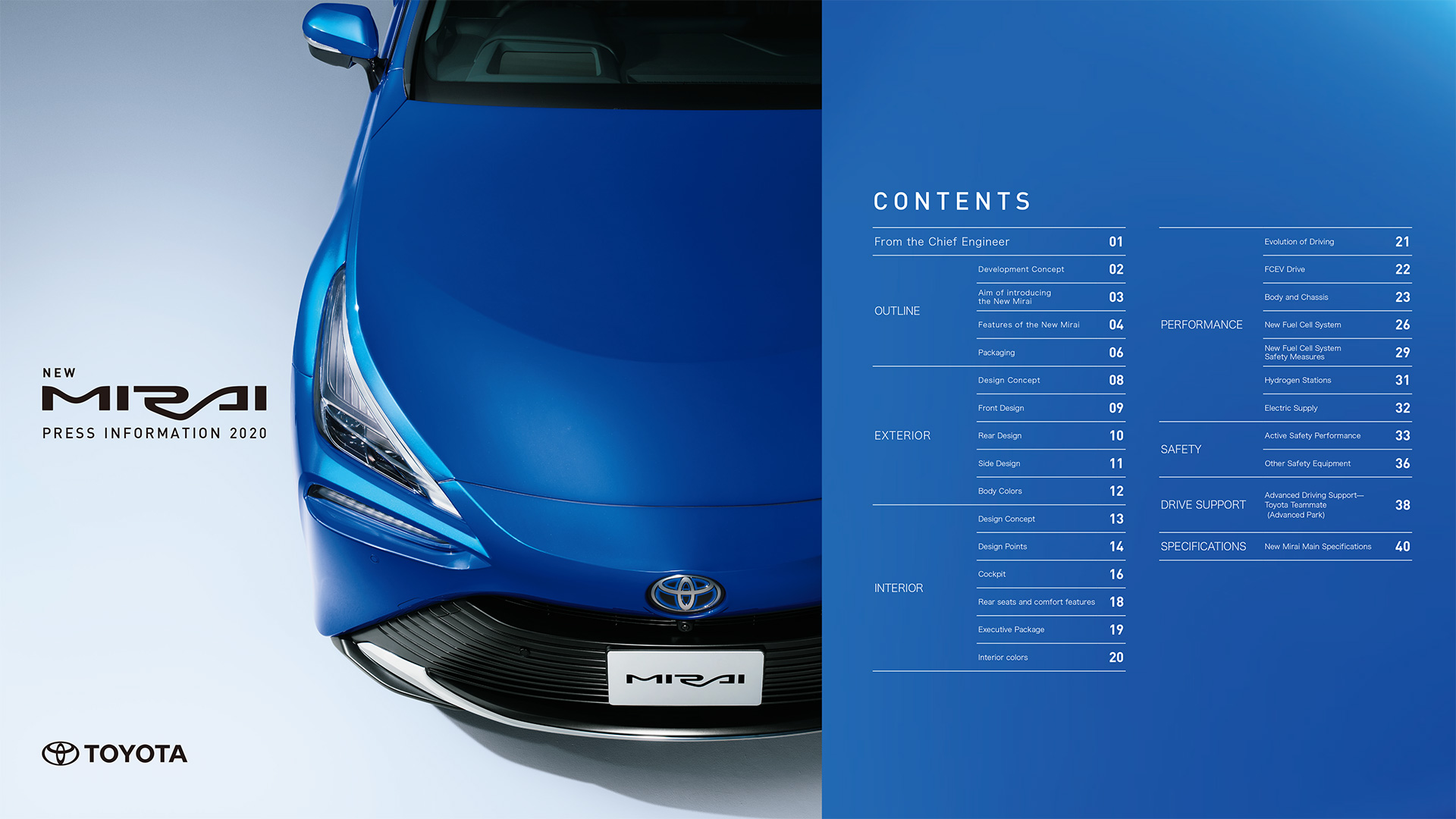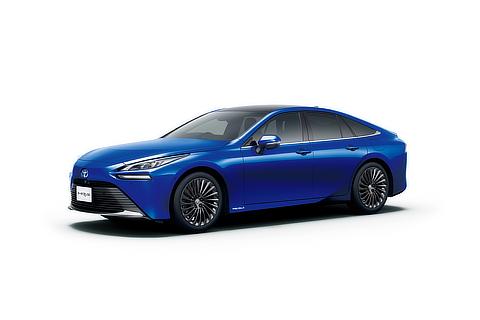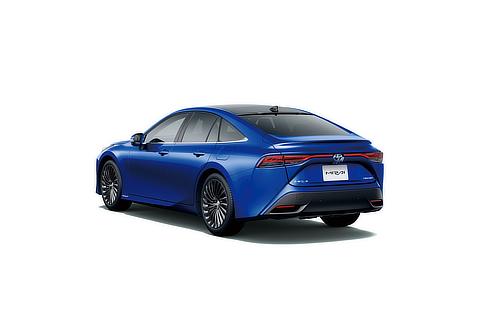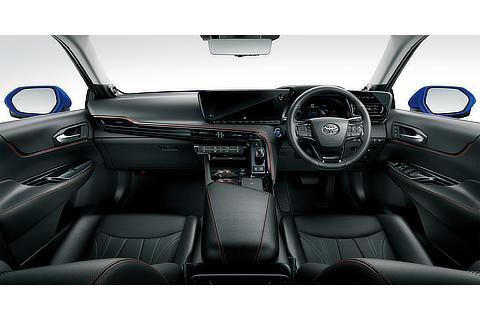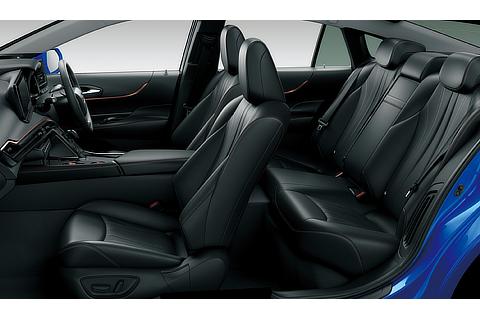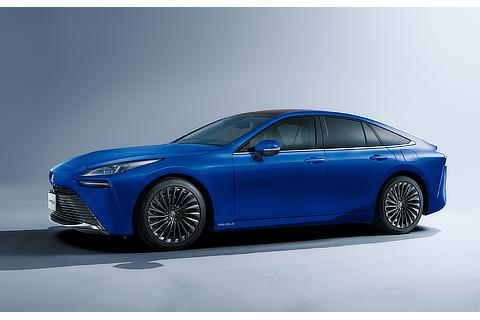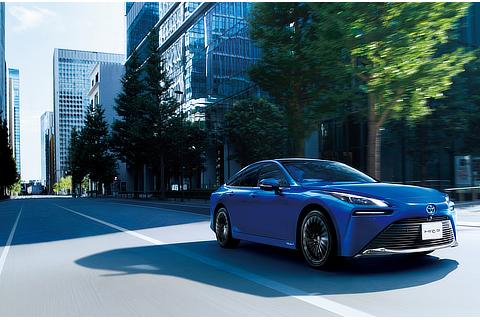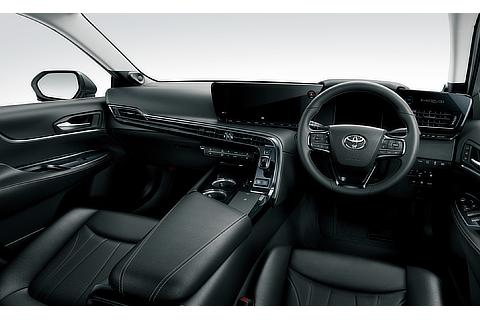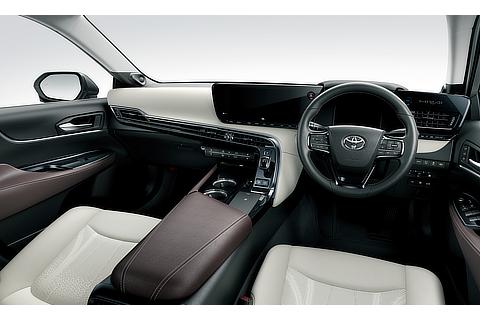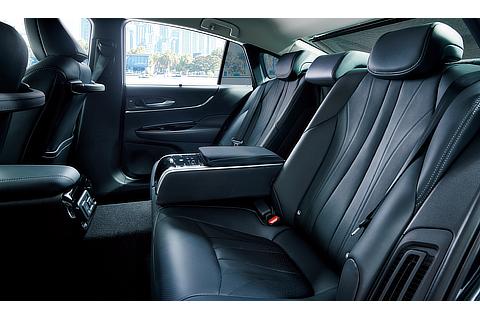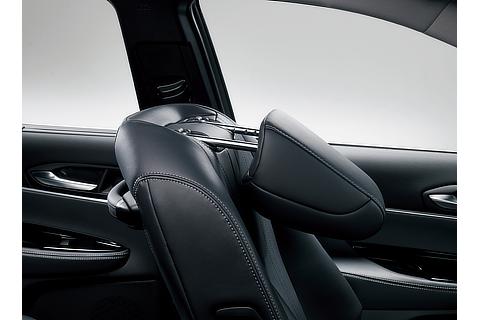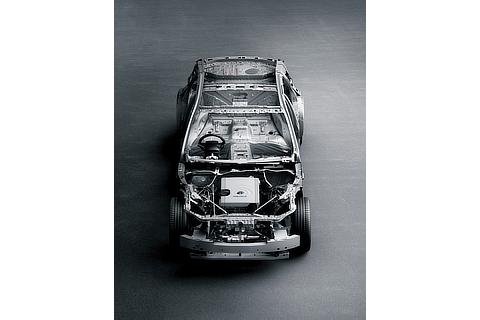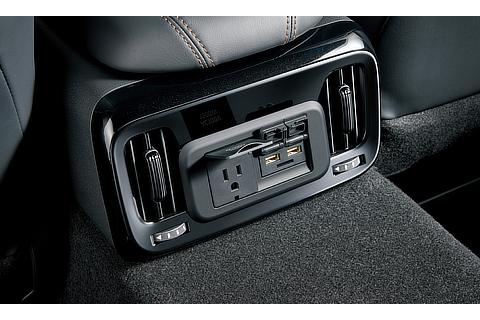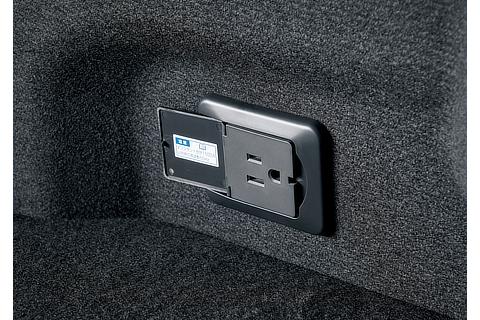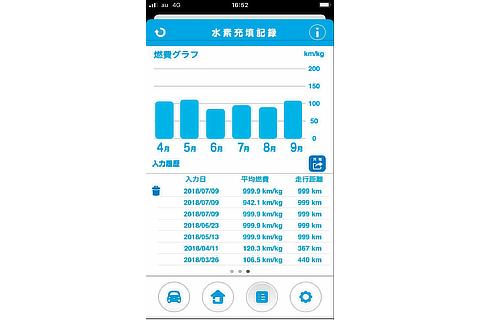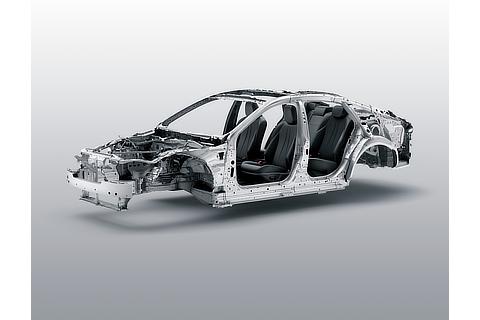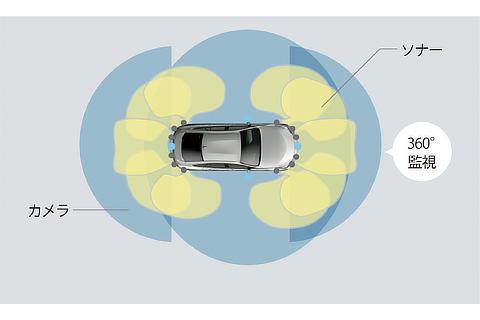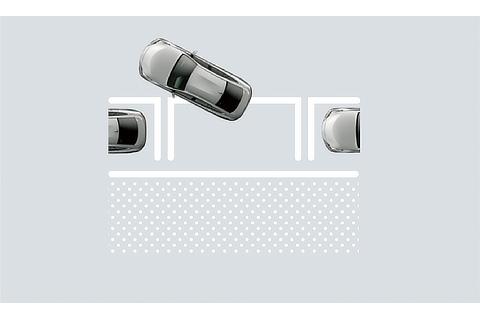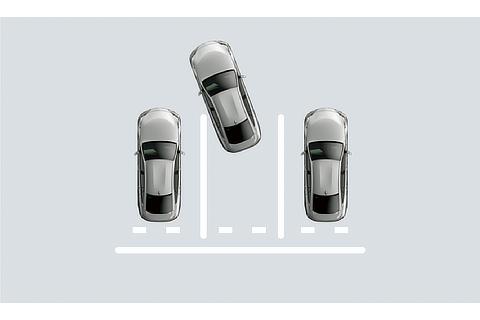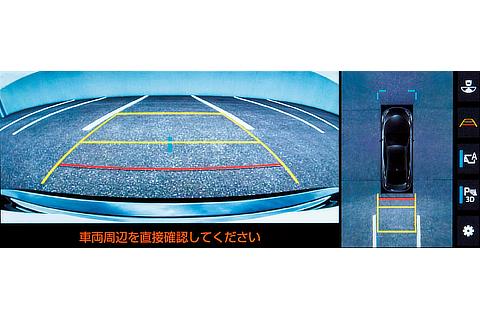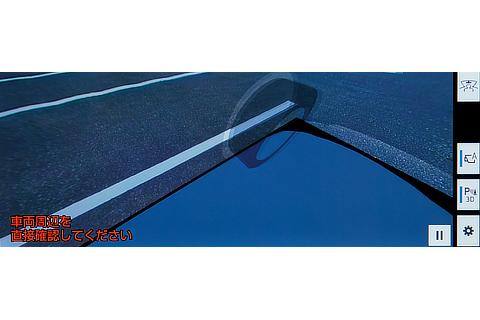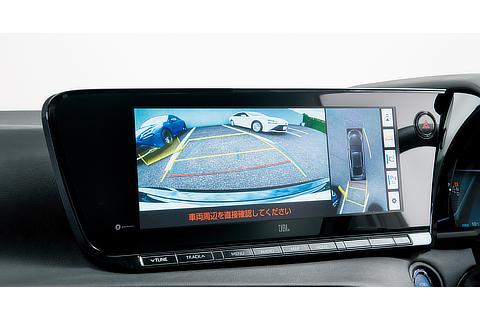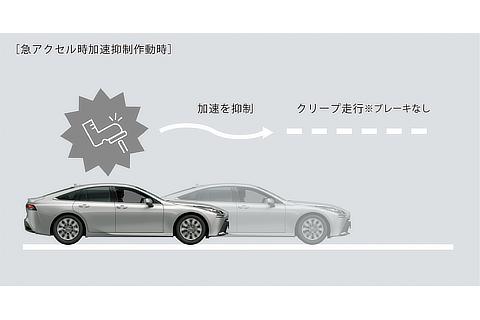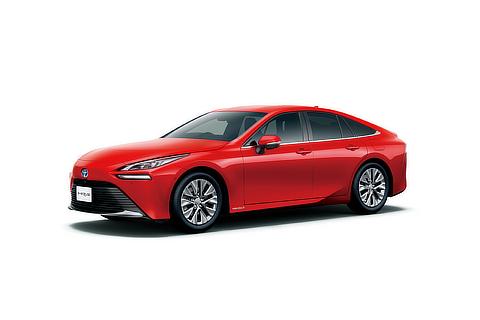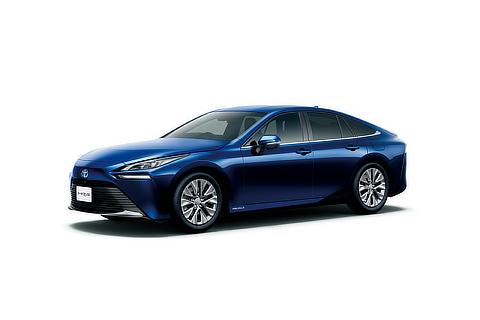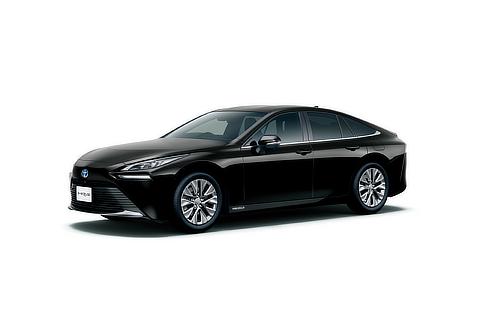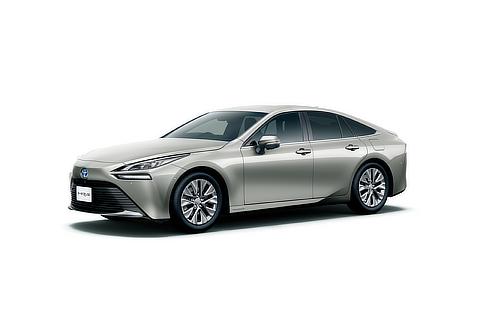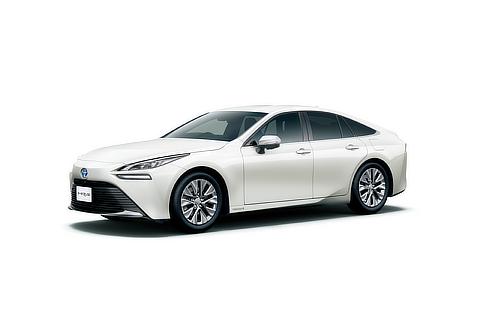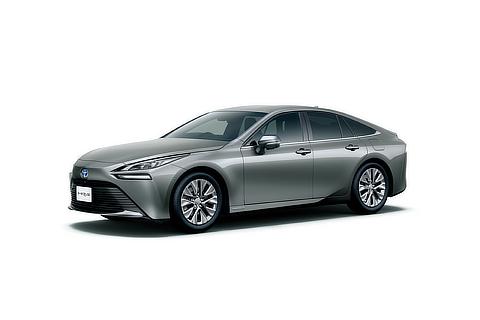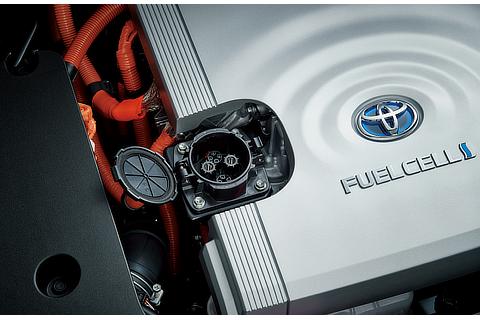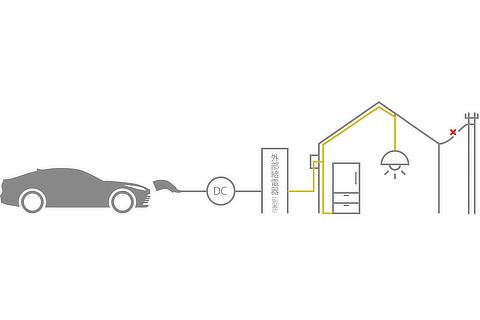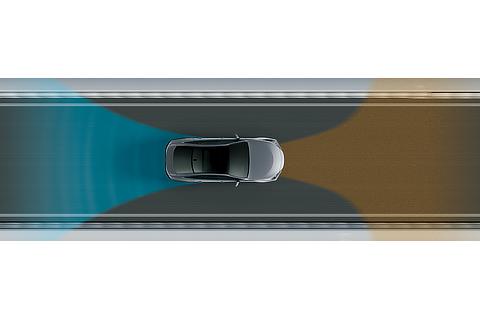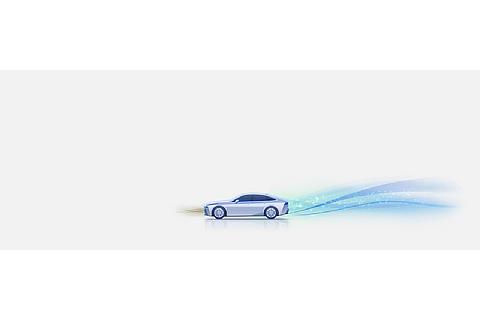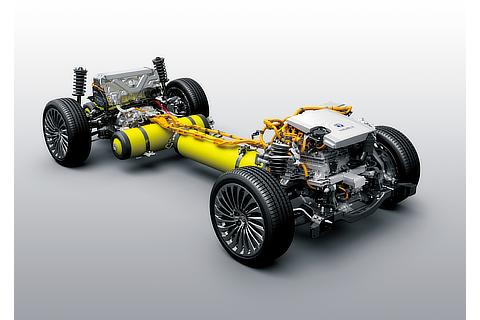Dec. 09, 2020
Toyota Launches the New MiraiA premium car that customers will truly want, achieved in an FCEV
Toyota City, Japan, December 9, 2020―Toyota Motor Corporation (Toyota) today launched the completely redesigned "Mirai" fuel cell electric vehicle (FCEV). The all-new Mirai is available from Toyota vehicle dealers starting December 9.
FCEVs run on hydrogen, a fuel that can be produced from various energy sources and contributes to preservation of the global environment and reinforcing energy security. They are the ultimate eco-cars, offering long cruising ranges with a short refueling time and generating zero emissions. The first-generation Mirai, launched in 2014, was a revolutionary FCEV and a global forerunner in mass production. During the early stages of the Mirai's introduction, there was limited supply capacity, and customers made various requests including a larger seating capacity and longer cruising range.
In response, Toyota set a target for the all-new Mirai to create a "premium car that will make customers think that 'this is a high-quality car that I truly want' immediately upon seeing it, while driving, and after they complete a trip," while maintaining its status as an FCEV.
Hydrogen use has progressed in various forms with the aim of creating a low-carbon and decarbonized economy, and Toyota plans to use new fuel cell (FC) systems that pursue compact size, efficiency, and productivity in the means of mobility that support society including trucks and buses, and contribute to the expanded use of hydrogen.
The new Mirai will serve as a new departure point for creating a hydrogen-based society of the future.
Grades and Prices
Two grades―the standard G grade and the high-end Z grade―are available. Both grades are equipped with ample and comfortable rear seat space, and the "Executive Package," with enhanced comfort as a luxury vehicle, is available. The "A Package" that includes Toyota Teammate Advanced Park and other features is available for the G grade. Prices for vehicles with Advanced Drive are not yet set.
| Price*1 (Japanese yen) | ||
|---|---|---|
| G | 7,100,000 | |
| "A Package" | 7,350,000 | |
| "Executive Package" | 7,550,000 | |
| Z | 7,900,000 | |
| "Executive Package" | 8,050,000 | |
| *1 | Does not include recycling fees. Separate pricing applies for Okinawa. |
|---|
Production Plant
Motomachi Plant
Vehicle Outline
- Emotional Appeal through Styling
The concept of "silent dynamism" was incorporated into the design with the aim of creating an emotional appeal not just because it is an eco-car, but because of its styling.
- The exterior design fuses the proportions to exude a sense of speed with outlines that emphasize bold surface changes.
- The interior design merges the fun of driving with a sense of comfort while in admiration of the advanced innovations at a higher level.
- The new Mirai is available in a lineup of eight body colors including Force Blue Multiple Layers, a newly-developed color that provides shading and vividness to accentuate the styling.
- Distinctive Driving Experience Unique to FCEVs
In addition to environmental performance, the new Mirai pursues perfection as a car that is comfortable and fun to drive.
- The torque surges from the moment the accelerator is pressed for the smooth acceleration of an FCEV up to any speed.
- The compact, high-output FC stack is located under the hood, and the motor and drive battery are in the rear. Optimal placement of the FC stack including the hydrogen fuel tank achieve an optimal 50:50 weight distribution between the front and the rear.
- Based on the GA-L platform that has established a reputation as a platform for high-end rear-wheel-drive vehicles, the structures of various parts including the rear have been redesigned to create greatly enhanced body rigidity.
- The new Mirai is an electrified vehicle with no engine vibration or noise, and the enhanced body rigidity and additional soundproofing measures provide an outstanding level of quietness.
As a result of these enhancements, the new Mirai delivers both responsive handling and a quiet and smooth ride, the joys of driving an FCEV.
- Industry-Leading Innovation
- Equipped with the latest Toyota Safety Sense active safety package
Toyota is introducing technologies to help reduce serious accidents resulting in injury or fatality with the aim of achieving its ultimate goal of "zero casualties and injuries from traffic accidents." For the new Mirai, the following functions have been enhanced even further:
Advancement of the Pre-Collision System (PCS)
- Intersection collision support
The system detects oncoming vehicles when turning across traffic and detects oncoming pedestrians crossing the street when turning in either direction to prevent collisions and reduce damage.
- Steering Assist
If a pedestrian is detected on the road, the system provides steering assistance to avoid a collision while ensuring that the vehicle stays in its lane.
Advances to other functions
- New Radar Cruise Control Function (curve speed reduction function)
When driving on a curve, if the system determines that a reduction in speed is necessary, it starts to decelerate the vehicle when the steering wheel is first turned, and terminates speed control when the steering wheel is returned to the original position.
- Driver Emergency Stop Assist
When the Lane Tracing Assist function is operating, if the driver stops operating the steering wheel or other systems due to a sudden change in physical condition, the system gradually decelerates the vehicle to support safe stopping.
Additionally, as a part of the support to prevent accidents caused by pedal misapplication, all vehicles are equipped with "Plus Support," which suppresses acceleration if pedal misapplication is detected, even when there are no obstacles in the vicinity (an exclusive Plus Support Smart key (available as a dealer-installed option) used for activation is required).
- Toyota Teammate Advanced Driving Assist Functions
The new Mirai is also equipped with the latest advanced driving assist functions developed based on the Mobility Teammate Concept, a unique Toyota concept for automated driving whereby the car and driver act as partners to enhance each other's capabilities and drive together. AI technology*2 centered on deep learning is incorporated to forecast various situations that may be encountered while driving and provide support for driver responses. Toyota Teammate uses software updates*2 so that new functions can be added and updated even after the vehicle is delivered to the customer, enabling ongoing responses to customer needs with the aim of making the new Mirai a car that is truly favored by customers. The driver and car can confirm each other's status through conversation and support one another, leading to safe driving and comfortable mobility.
| *2 | Introduced and implemented on vehicles equipped with Advanced Drive. |
|---|
Advanced Drive (sales release scheduled in 2021 for vehicles equipped with the package)
When driving on an expressway or other motor-vehicle-only roadway, the onboard system appropriately detects actual driving conditions, makes determinations, and provides operational support under the driver's supervision to keep the vehicle in its lane, maintain distance from other vehicles, navigate a lane split, change lanes, overtake other vehicles, and more. In pursuit of achieving system-conducted driving that can be trusted by the driver, fundamental vehicle performance was honed so that the driver would feel secure in leaving driving to the vehicle, and the system was engineered to prioritize safety in making judgments. The driver is freed from operation of the accelerator, brakes, and steering, allowing a reduction in driver burden during long drives and enabling safe driving in which the driver is able to pay better attention to the surroundings.
Advanced Park (for vehicles equipped with the package)
Through integrated cameras and ultrasonic sensors, the latest advanced parking assist technologies support the driver in recognition, judgment, and operation. Besides support of all operations―steering, acceleration, braking, and gear changes―the bird's-eye view display also shows the ideal steering wheel positions for a safe and secure parking experience.
- "Minus emissions", a new concept and a Toyota first: The more you drive, the cleaner the air
The new Mirai is equipped with an air purifier system that makes use of the feature unique to FCEVs of taking in air to generate electricity as well as then releasing the air while driving. The system takes in air and purifies it for use in the fuel cell stack before it is released again. Specifically:
- The air cleaner element (dust filter) has been enhanced to capture particles down to the PM2.5 level.
- A chemical filter eliminates harmful chemical substances and suppress PM2.5 generation.
In addition, the amount of air that has been cleaned while driving is displayed on the center display in an easy-to-understand format (air purification meter).
- Cruising Range that gives peace of mind
The floor tunnel space is used to increase hydrogen capacity (from 4.6 kg to 5.6 kg).
SiC semiconductors are used in the FC boost converter, a lithium-ion battery has been adopted for the secondary battery, and other enhancements have been made to reduce unit loss. In addition to improving the performance of the FC stack, a catalyst refresh control that uses the enhanced performance has been introduced to raise electricity generating efficiency.
As a result of these enhancements, cruising range has been increased by approximately 30 percent compared to the previous model, achieving a cruising range*3 of 850 km (G grade).
| *3 | Range calculated based on fuel capacity using the JEVS method and fuel efficiency (km/kg) in the WLTC mode driving pattern. |
|---|
Electricity Supply Function
If oxygen and hydrogen are available, an FCEV can generate a significant amount of electricity through the chemical reaction of these two elements, and the electricity can be used as an emergency power source during power outages caused by disasters and for other emergency situations. The new Mirai is equipped with the following two different power supply functions as a standard feature:
During a disaster or other emergencies, a large amount of electricity can be supplied to home or electric devices by connecting to the external power supply (sold separately). The external power supply outlet is installed in a compartment located under the hood. It can supply a maximum of 9 kW.
- Accessory outlets (with emergency electric power supply system)
The system feeds power (AC 100V, 1500 W) through accessory outlets in two locations to power electric devices. This emergency electricity supply system is capable of providing electricity to an ordinary household (in Japan) for about four days.*4
| *4 | Assuming average use of 400 Wh of electric power. |
|---|
Reference 1Pocket Mirai exclusive app
With this app, a smartphone can be used to find information about hydrogen stations nationwide in Japan and to check their current operating status. It is also equipped with a function to display vehicle information the last time the FC system was stopped (including the remaining amount of hydrogen, possible cruising distance, possible external power supply time for use in an emergency).
Reference 2Safety of the hydrogen system
When designing the safety of the hydrogen system, all possible countermeasures have been taken to ensure that the hydrogen does not leak and, in the unlikely event that it does, immediately detecting the flow of hydrogen and stopping its release to prevent any hydrogen accumulation.
Reference 3Subsidy Information
| Grade | Manufacturer's Suggested Retail Prices (excluding consumption tax) | Eco-car tax incentive (E) | Environmental performance -based tax reduction (P) | Special Automobile Tax Reduction (G) | CEV subsidy (clean energy vehicle adoption subsidy for business) (C) | Total incentives | |
|---|---|---|---|---|---|---|---|
| Name | Driveline | ||||||
| G | 2WD | 7,100,000 yen (6,454,545 yen) | Approx. 30,000 yen | Approx. 174,200 yen | Approx. 18,500 yen | 1,173,000 yen | Approx. 1,395,700 yen |
| G "A Package" | 2WD | 7,350,000 yen (6,681,818 yen) | Approx. 30,000 yen | Approx. 180,300 yen | Approx. 18,500 yen | 1,173,000 yen | Approx. 1,401,800 yen |
| G "Executive Package" | 2WD | 7,550,000 yen (6,863,636 yen) | Approx. 30,000 yen | Approx. 185,300 yen | Approx. 18,500 yen | 1,173,000 yen | Approx. 1,406,800 yen |
| Z | 2WD | 7,900,000 yen (7,181,818 yen) | Approx. 30,000 yen | Approx. 193,800 yen | Approx. 18,500 yen | 1,173,000 yen | Approx. 1,415,300 yen |
| Z "Executive Package" | 2WD | 8,050,000 yen (7,318,182 yen) | Approx. 30,000 yen | Approx. 197,500 yen | Approx. 18,500 yen | 1,173,000 yen | Approx. 1,419,000 yen |
Link to the "Mirai" webpage (Japanese only)
Toyota Motor Corporation works to develop and manufacture innovative, safe and high-quality products and services that create happiness by providing mobility for all. We believe that true achievement comes from supporting our customers, partners, employees, and the communities in which we operate. Since our founding over 80 years ago in 1937, we have applied our Guiding Principles in pursuit of a safer, greener and more inclusive society. Today, as we transform into a mobility company developing connected, automated, shared and electrified technologies, we also remain true to our Guiding Principles and many of the United Nations' Sustainable Development Goals to help realize an ever-better world, where everyone is free to move.
- SDGs Initiatives
- https://global.toyota/en/sustainability/sdgs/














